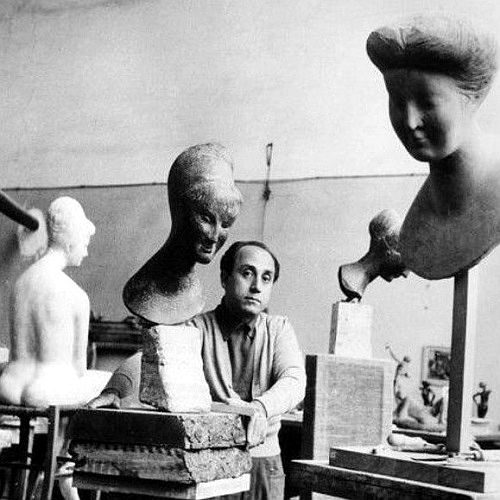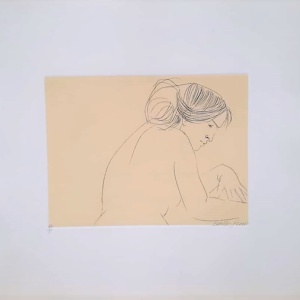Emilio Greco

PRINT ARTS
ARTISTS
Emilio Greco was born in 1913 in Catania. At the age of thirteen, he began his apprenticeship as a stone mason for a local architect who built and restored civic monuments. He began exhibiting in 1933 and, after attending the Academy of Fine Arts of Palermo, he began his military service in the Royal Italian Army in 1934, which led to him fighting in various battles in Albania and Africa.
In 1948, he began teaching at the art school of Via Ripetta in Rome, where he later held the chair of sculpture at the Academy of Fine Arts. His artistic research was rooted in the figurative artwork of the 1920s and 1930s, inspired by the archaic, classical and Neo-Etruscan Mediterranean ideals of solidity and clarity. A distinctive feature of his work is its constant dialogue with tradition and classicism that shows through in his sculptures, drawings and etchings.
Among his most famous works is the 1956 sculpture Pinocchio e la Fatina (Pinocchio and the Fairy) located in Collodi Park, the 1970 monument to Pope John XXIII in Saint Peter’s Basilica and the monumental doors of Orvieto Cathedral. Among his most important awards are the Grand Prize of Sculpture at the 1956 Venice Biennale, the Gold Medal of Merit for Culture and Art conferred by the President of the Italian Republic (1961), and the Accademia dei Lincei Prize for Etching (1993). He was also a member of the Accademia di San Luca (Academy of St Luke), Rome. His works are found in important Italian museums and in major museums worldwide, including the Tate Gallery and the Estorik Collection in London, the Hermitage of Saint Petersburg and the Pushkin State Museum of Fine Arts in Moscow. Greco died in Rome in 1995.



